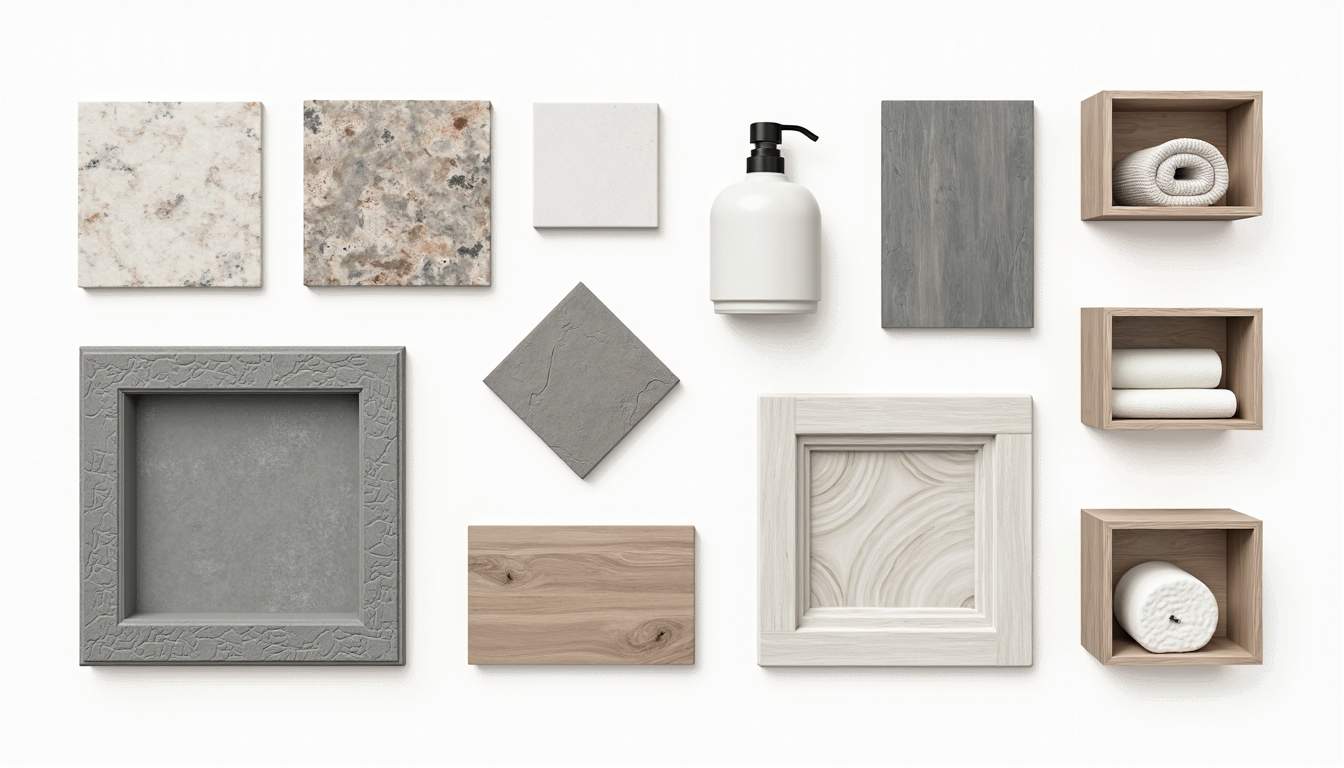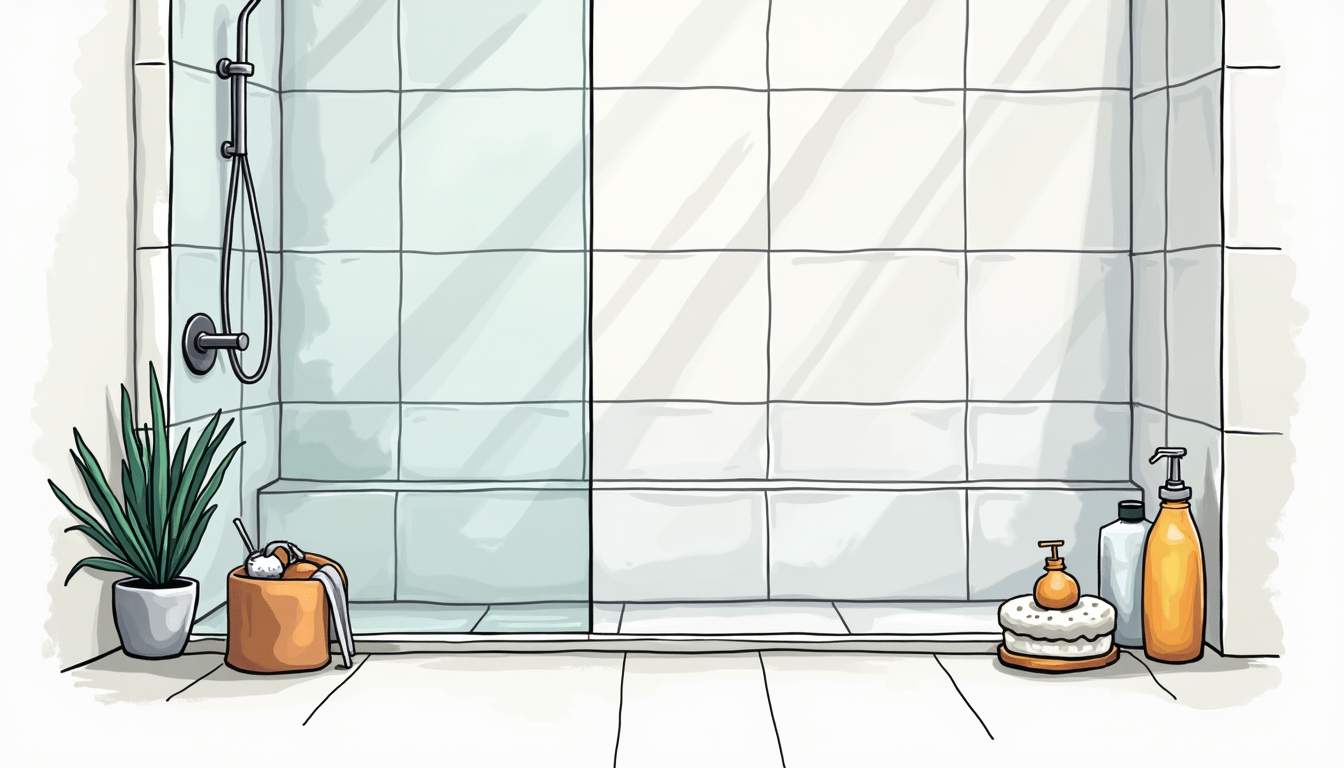Renovating a shower can be an exciting yet daunting project. Whether you're looking to enhance the aesthetics of your bathroom, improve functionality, or increase your home's value, a well-planned shower renovation can make a significant difference. This guide offers essential tips to ensure your shower renovation is a success, covering everything from planning and budgeting to design choices and installation.
Planning Your Shower Renovation
Before diving into the renovation process, it's crucial to have a solid plan in place. This phase will set the foundation for a successful project.
Assess Your Current Shower
Take a good look at your existing shower setup. Identify what works and what doesn’t. Is the space too cramped? Is the water pressure sufficient? Are there any leaks or mold issues? Understanding the current state of your shower will help you determine what changes are necessary.
Consider the layout as well. If your shower feels claustrophobic, you might want to explore options for expanding the space. Conversely, if you’re happy with the size but want to modernize the look, focus on aesthetic upgrades. You might also want to evaluate the type of showerhead and fixtures you currently have. Upgrading to a rain showerhead or a multi-function spray can significantly enhance your shower experience, providing a luxurious feel that transforms your daily routine into a spa-like retreat.
Set a Realistic Budget
Budgeting is often the most challenging part of any renovation. Start by determining how much you can afford to spend. Remember to include costs for materials, labor, and unexpected expenses that may arise during the project.
Research the average costs of various materials and fixtures. This will help you make informed decisions and avoid overspending. It’s also wise to set aside a contingency fund—typically around 10-20% of your total budget—for any surprises that may come up. Additionally, consider the long-term value of your choices; investing in high-quality materials may cost more upfront but can save you money on repairs and replacements in the future, ultimately enhancing your home’s resale value.
Gather Inspiration
Inspiration can come from various sources, including home improvement magazines, websites, and social media platforms like Pinterest and Instagram. Create a mood board to visualize your ideas and preferences. This will help you communicate your vision to contractors or designers and keep your renovation on track.
Don’t hesitate to visit local showrooms or home improvement stores to see materials and fixtures in person. Touching and seeing items up close can help you make better choices regarding color schemes, textures, and finishes. Additionally, consider exploring different design styles—such as minimalist, rustic, or contemporary—to find what resonates with you. Engaging with online forums or communities can also provide valuable insights and tips from others who have undergone similar renovations, allowing you to learn from their experiences and avoid common pitfalls.
Choosing the Right Materials
The materials you select for your shower can greatly impact both its appearance and functionality. Here are some key considerations when choosing materials.
Section Image
Tiles and Flooring
Tiles are a popular choice for shower walls and floors due to their durability and water resistance. When selecting tiles, consider the size, color, and texture. Larger tiles can create a more spacious feel, while smaller tiles may offer more design flexibility.
Additionally, think about the slip resistance of the flooring material. Safety should always be a priority, especially in wet areas. Textured tiles or those with a matte finish can help prevent slips and falls.
Shower Fixtures
Choosing the right fixtures is essential for both functionality and style. Consider the type of showerhead you want—options include handheld, rain, or multi-function models. Each offers different benefits, so think about your preferences and needs.
Don’t forget about the faucet and controls. These elements can enhance the overall aesthetic of your shower while providing ease of use. Look for finishes that complement your tile choices, such as brushed nickel, chrome, or matte black.
Waterproofing and Insulation
Proper waterproofing is critical in a shower renovation to prevent leaks and water damage. Ensure that the walls and floors are adequately sealed before installing tiles or fixtures. Using a waterproof membrane can provide an extra layer of protection.
Insulation is also important, especially if your shower is located on an exterior wall. Proper insulation can help maintain water temperature and reduce energy costs.
Designing Your Shower Space
The design of your shower should reflect your personal style while maximizing functionality. Here are some tips to create an inviting and efficient space.
Consider Layout Options
The layout of your shower can greatly influence its usability. Popular layouts include corner showers, alcove showers, and walk-in designs. If space allows, a walk-in shower can provide a luxurious feel and easy access.
Think about the placement of fixtures as well. Ensure that the showerhead and controls are easily accessible and that there’s enough room for movement. If you’re considering a bench or shelf, plan their locations to enhance convenience without crowding the space.
Incorporate Storage Solutions
Storage is often a challenge in shower spaces. Consider built-in shelves or niches for storing toiletries and other essentials. These features can help keep the shower organized and clutter-free.
Wall-mounted caddies or corner shelves can also be effective solutions. Choose materials that match your overall design while ensuring they are resistant to moisture and easy to clean.
Lighting and Ventilation
Good lighting can transform the look and feel of your shower. Consider installing recessed lighting or wall sconces that provide adequate illumination without being overly harsh. Natural light is also a great option if feasible; adding a window can create a bright and airy atmosphere.
Ventilation is equally important to prevent mold and mildew growth. An exhaust fan can help remove excess moisture, keeping the space fresh and dry. Ensure that the fan is appropriately sized for your shower area.
Hiring Professionals vs. DIY
Deciding whether to hire professionals or tackle the renovation yourself can be a tough choice. Each option has its pros and cons.
When to Hire Professionals
If your renovation involves extensive plumbing or electrical work, it’s often best to hire licensed professionals. They have the expertise to handle complex tasks safely and efficiently. Additionally, if you’re not confident in your DIY skills or lack the time to dedicate to the project, hiring a contractor can save you stress and ensure a high-quality finish.
Research potential contractors thoroughly. Look for reviews, ask for references, and ensure they have the necessary licenses and insurance. A good contractor will communicate effectively and keep you informed throughout the renovation process.
When to Go DIY
For those with a knack for home improvement, there are many aspects of a shower renovation that can be tackled as a DIY project. Tasks such as painting, tiling, or installing fixtures can be manageable with the right tools and resources.
Before committing to a DIY approach, assess your skills honestly. There are numerous online tutorials and guides available that can help you learn the necessary techniques. However, be prepared for the possibility of unexpected challenges that may arise.
Executing the Renovation
Once the planning and preparation stages are complete, it’s time to execute the renovation. This phase requires careful attention to detail to ensure everything goes smoothly.
Section Image
Demolition and Preparation
Start by removing the existing fixtures, tiles, and any other elements that will be replaced. This can be a messy process, so be sure to protect surrounding areas and have a plan for debris disposal.
After demolition, inspect the underlying structure for any damage or issues that need to be addressed. This is the perfect time to make repairs or upgrades, such as reinforcing walls or updating plumbing.
Installation Process
Follow your renovation plan closely during the installation phase. Begin with waterproofing and insulation, then move on to installing tiles and fixtures. Take your time to ensure everything is level and properly aligned.
For those who are DIYing, don’t hesitate to consult resources or seek advice from professionals if you encounter challenges. It’s better to ask for help than to make costly mistakes.
Final Touches
Once the major installation is complete, it’s time for the finishing touches. This includes caulking around edges, cleaning the space, and adding any decorative elements. Consider adding plants or artwork to create a welcoming atmosphere.
Before using the shower, ensure everything is functioning correctly. Test the water pressure, check for leaks, and confirm that all fixtures are working as intended. A thorough inspection will help avoid issues down the line.
Maintaining Your New Shower
After the renovation is complete, maintaining your new shower is essential to keep it looking and functioning well. Regular upkeep can extend the life of your fixtures and minimize the need for future repairs.

Regular Cleaning
Establish a regular cleaning routine to prevent soap scum, mold, and mildew buildup. Use gentle, non-abrasive cleaners that are safe for your chosen materials. Avoid harsh chemicals that can damage finishes or grout.
Pay special attention to grout lines and corners, as these areas are more prone to mold growth. Consider using a squeegee after each use to minimize water spots and stains.
Monitor for Issues
Keep an eye out for any signs of wear or damage. Check for leaks, cracks in tiles, or loose fixtures. Addressing these issues promptly can prevent larger problems from developing.
If you notice persistent issues, such as low water pressure or strange noises, don’t hesitate to consult a professional. Early intervention can save time and money in the long run.
Conclusion
A successful shower renovation requires careful planning, attention to detail, and a commitment to quality. By following these essential tips, homeowners can create a beautiful and functional shower space that enhances their bathroom and adds value to their home. Whether you choose to go the DIY route or hire professionals, the key is to stay organized and informed throughout the process. With the right approach, your dream shower is within reach.
Start Your Shower Renovation Journey with Anden Kitchen & Bath Centre
Ready to take the next step in your shower renovation? At Anden Kitchen & Bath Centre, we bring over three decades of expertise to your home improvement projects. Serving Peterborough and the Kawartha Lakes region, our commitment to innovative design, quality craftsmanship, and exceptional customer service ensures that your vision for a perfect bathroom comes to life. Don't just dream about your ideal shower space—make it a reality. Request a quote today and let us help you create a bathroom that's as functional as it is beautiful.

